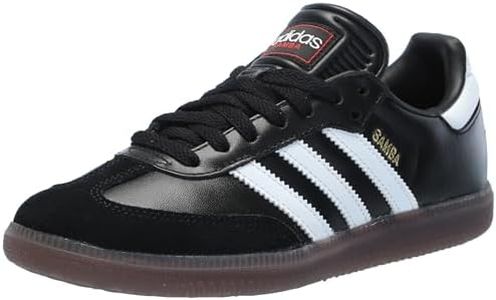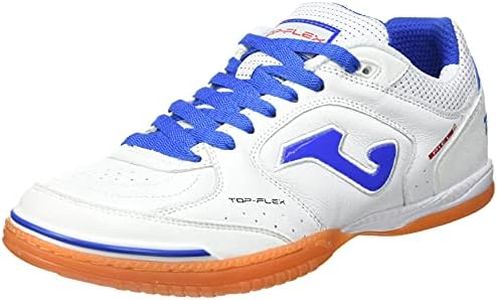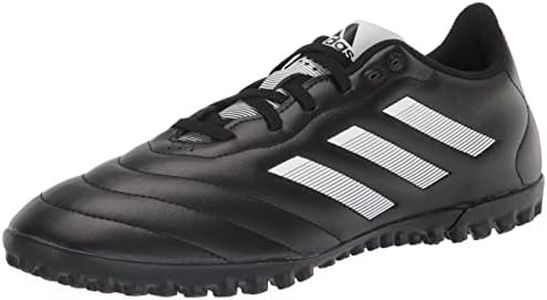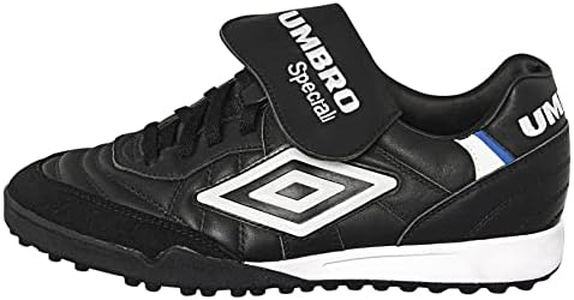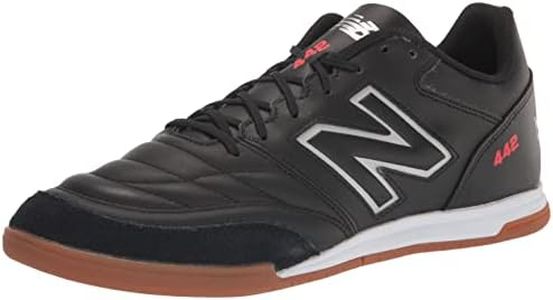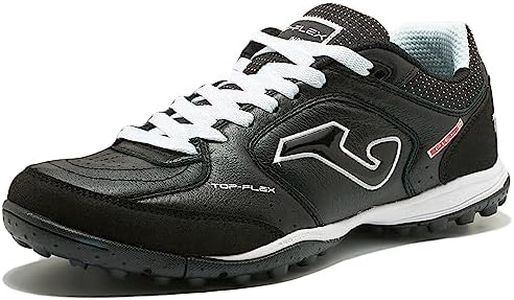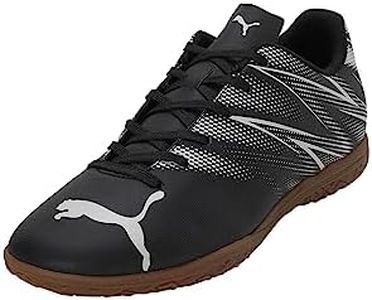We Use CookiesWe use cookies to enhance the security, performance,
functionality and for analytical and promotional activities. By continuing to browse this site you
are agreeing to our privacy policy
10 Best Indoor Soccer Shoes
From leading brands and best sellers available on the web.Buying Guide for the Best Indoor Soccer Shoes
Choosing the right indoor soccer shoes can greatly enhance your performance, comfort, and safety when playing on indoor courts. Unlike outdoor options, indoor soccer shoes are designed with flat, grippy soles specifically tailored for hard surfaces, and the right choice depends on your playing style, frequency, foot shape, and preferences. It's important to know what features really matter so you can select shoes that match your needs and help you play your best game.Outsole Material and Tread PatternThe outsole is the bottom part of the shoe that comes into contact with the playing surface. For indoor soccer, a gum rubber outsole is common because it provides excellent grip and helps prevent slipping on smooth court surfaces. Look for patterns that promote traction and quick direction changes. If you play on polished wood or synthetic courts, a fine tread suits best, while deeper grooves may help on slipperier surfaces. Consider the courts where you play most to decide on the right outsole.
Fit and ShapeProper fit is vital because indoor soccer involves a lot of quick movements, and a well-fitting shoe will give you better control and comfort. Shoes can run narrow, standard, or wide in both toe box and heel. If you have narrower or wider feet, prioritize finding a shoe that fits snug but not tight, as too much space can cause blisters and poor ball feel. Try on shoes with your usual sport socks and make sure there’s no slipping or pinching.
Upper MaterialThe upper is the top part of the shoe covering your foot. Common materials include synthetic leather, mesh, genuine leather, or a combination. Synthetic uppers are often lighter, more durable, and easier to clean, while leather uppers usually offer greater touch and comfort by molding to your foot over time. Mesh can offer better breathability which helps keep feet cool during intense games. If you prioritize ball touch and natural fit, leather might be best; if you need durability and lightness, synthetic or a hybrid is a good choice.
Cushioning and Insole SupportIndoor surfaces can be hard on feet and joints, so cushioning is important for comfort and injury prevention. Shoes range from minimal (close-to-ground) to more padded soles. Less cushioning gives better court feel and stability, which is great for fast players who want responsiveness, while more padding might be preferable for those needing extra impact protection or those with sensitive feet. Think about your comfort preference and whether you’ve had foot or joint discomfort playing before.
WeightThe weight of a shoe affects your speed and agility. Lighter shoes are easier to move in and can feel more natural, but sometimes at the cost of durability or support. Heavier shoes may offer more protection and last longer, but they can feel bulky. If you rely on quick sprints and lots of movement, go for a lighter shoe, but make sure it still provides enough structure for your needs.
Toe Protection and ReinforcementIndoor soccer can be tough on the toe area, given the frequent kicking and stopping. Some shoes add extra reinforcement at the toe to increase durability and shield your foot. If you often find yourself scuffing or wearing out shoe tips, or if you play in a very competitive or aggressive style, look for shoes with sturdy toe caps or additional material in this area.

